Cybercrime involving data extortion, impersonation of various entities, taking over control, and deceptions (phishing, bank loan or credit card scams, hijacked profile scams, fake news, fake shopping websites, and job offer scams) have become part of virtual reality.
While they don't make running a business through the Internet hard or impossible, they fuel two opposing phenomena: distrust, fear, and decisive actions that reduce these negative emotions.
Raising the level of security regarding establishing relationships (business, commercial) through the Internet has been a priority for at least a decade. It consists of separate sets of services, tools, solutions, and technologies.
What does the credibility of a B2B (business to business) service depend on, and how to inspire trust on the Internet? How to make a website for B2B credible?
This is our problem today.
A sense of security, credibility, and trust (from time to time effectively disrupted by cybercriminals) is perhaps one of the most crucial issues over which owners of B2B and B2C websites lose sleep.
No other issue, from the set of emotional problems (e.g., positive emotions evoked by aesthetic pleasure, creative design elements, satisfaction), is as strong a demotivator as website credibility and the associated website's reputation.
That's why it is essential to ensure appropriate content and exposition of elements that:
- Are responsible for the First Impression
- Increase the credibility of the site
- Raise trust in it and thus lower the Bounce Rate and allow the site to generate leads.
What is credibility? How to check it? Which elements inspire credibility? Can you improve the First Impression or customer experience? Can you increase and shape the customers' trust in your business site? How much does a website that inspires trust cost?
We will provide answers to these questions in this article. We will point out and discuss 15 crucial Credibility Indicators. That is, elements that significantly impact credibility and trust and allow you to answer the question: How to check the website's credibility?
A signpost and solid evidence will be findings of researchers from Nielsen Norman Group included in the report "B2B Website Usability for Converting Users into Leads and Customers. 3rd Edition."
One of the chapters of this document is dedicated to the credibility and trust of B2B websites. American researchers conducted thorough and solid analyses and studies.
Self-analyzing and examining the B2B website according to the following tips, guidelines, and suggestions will give you a solid starting point for thorough optimization activities.
Emotions on the Internet or credibility on the B2B website
Fear, concern, or uncertainty are negative emotions that usually come from the low credibility of the website and prompt B2B customers to abandon the site or shopping cart or result in a lack of inquiries.
Why does this happen? Customers leave the site guided by their feelings. And their emotional reactions appear nearly automatically "in the blink of an eye."

You don't have to be Aristotle, who's often referred to in the context of credibility, to discover that the B2B website's credibility and the trust it inspires, the First Impression it evokes, are crucial factors, for it is up to them to determine whether the purchase or the cooperation will happen at all.
The credibility and reputation of a website and their consequences
The matter is serious because, according to research (performed for many years and on many markets), low websites' credibility and low trust they inspire cause negative impressions and discourage customers from buying.
And no factor can compensate for these negative impressions.
Even low prices, attractive discounts, and free deliveries aren't able to counteract the effects of negative feelings that a website with low credibility can evoke.
A B2B website that can't quickly win over customers doesn't receive a second chance; they leave it. The credibility of information on the Internet, to put it in somewhat sophisticated language, is at a premium.
One cannot be surprised at such a strong reaction from users and site visitors. Nobody wants to take risks, especially when the risk-reward ratio is almost proportional.
None of us will expose ourselves to the risk of fraud, theft, failure to meet timeframes, or purchase of faulty products, particularly when the value of the purchase is not high.
The value here is understood as the ratio of the value of the product to the value of the problem we solve.

When entrusting our personal data (e.g., credit card numbers), making online payments, entering sensitive data, and making binding decisions (in the case of serious financial, logistic, and production consequences), you have to be sure that the company is credible.
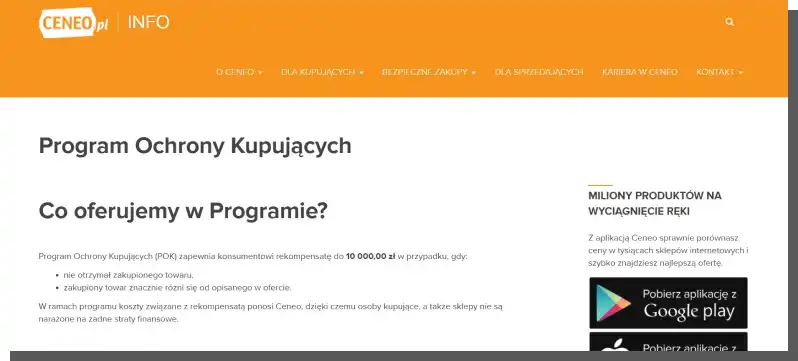
The website becomes the company's representative when the relationship is established online without meeting face-to-face.
Its quality, style, appearance, performance, and information on it will ensure customers or raise uncertainties. The emotional reaction that controls the process of evaluation occurs instantly.
First Impression, first 50 milliseconds
We've described the mechanism of the First Impression in a separate article. We must write here for the sake of order that the evaluation of B2B websites is closely related to how people react to others.
Similar mechanisms and effects are also in play (e.g., the Halo Effect). Our reactions to websites are really quick and economical.
People need twice the time to form an opinion about another person than when they first browse any B2B website. Emotional attitude towards it (positive, negative, or neutral) appears within 50 milliseconds.
People's impressions (regarding the website's credibility) are primarily formed based on the site's aesthetic appeal.
When they look at it for a short time, they will evaluate its:
- Professionalism (e.g., expressed by the quality of images, especially of hero shots, minimalist design)
- Symmetry, harmony, and visual order (general organization of content, e.g., achieved through the use of white space)
- Color scheme (appropriateness of colors to industry, adequacy of colors — leading, complementary)
- Typography (font, typeface, and size play a significant role in building the tone and atmosphere of the site)
- Simplicity and ease of navigation (user-friendly navigation)
- Reliability and proper operation (loading speed, laggy animated graphics; in general, all, even the smallest malfunctions can cause skeptical and distanced impressions that trigger caution).
In a short time, the website can evoke positive emotions (such as sympathy) and, in subsequent seconds, can be considered credible.
The First Impression, when it is strong and positive, opens the way to learning about elements of the site that are responsible for inspiring trust and supporting the improvement of credibility. However, before we discuss it, it's worth taking a closer look at the concepts of credibility and trust.
The credibility of a B2B website
What is credibility, and how can we define this type of attitude? It is a unique combination of faith and conviction.
Build on the knowledge or previous experience, often, however, on elements commonly considered as Confidence Indicators.
Thanks to them, you can presume, assume, and believe that something that worked and works and will be working in the future. It will progress and exist according to your expectations.
A credible B2B website is a website considered real (and therefore not pretending to be real) and authentic. It's a site that establishes credibility in front of your eyes, which means it allows you to easily access information and data that will enable you to verify it, for example, in any Debtor Registry.
A credible site will allow you to almost instantly identify if you're in the right place.
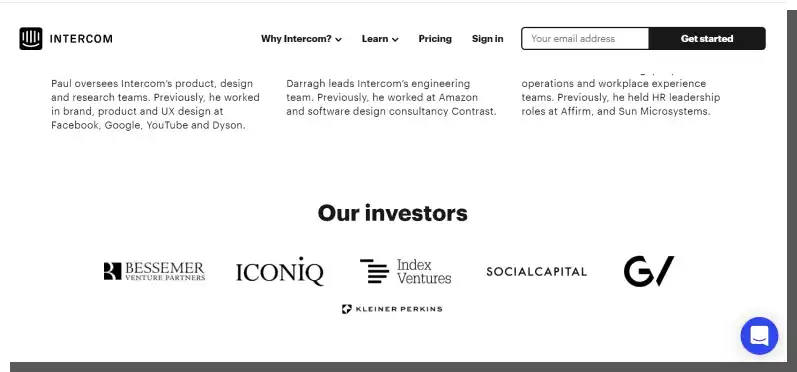
Credibility is a state of minimal certainty. So, what assures people and convinces them to use the B2B website?
During the first overview, the most important aspects influencing the credibility of the B2B website are the following:
- Visual up-to-dateness: compliance with trends, standards, use of interesting design elements
- Linguistic flawlessness: such as typos, stylistic and spelling errors
- Perfection of execution: regarding the front-end and back-end layer
- Self-esteem: such as communicating the company's position or the status of the industry leader
- Presentation of content: easy access to information about the company, its market experience, offer, product descriptions, value proposition, and evaluation of its operation by other customers
- Method of establishing authority: for example, by a public presentation of the company's customers, business partners, opinions of experts, and case studies
- Style of communication, its adequacy to industry standards: whether it is in line with requirements and expectations, whether it is formal, semi-formal, partnership-based, friendly, or informal
- Tone: emotional effects evoked by it, to what extent they are adequate to expectations and habits (whether it is serious and distanced, direct and joyful).
While a positive first impression is essential for the website to be considered reliable, an expanded, deepened in subsequent seconds of browsing credibility is necessary for the B2B website to be considered trustworthy.
In turn, without trust, it's impossible to sell successfully, provide services, or establish business relationships.
Trustworthy B2B websites
What is trust, and why does it play a crucial role in business, especially in business relationships established online?
Not to be grandiose, but without trust, no interaction between people is possible. So let us say a few words about it.
Trust is knowledge, a belief built on it, reinforced by faith in the following:
- Relative unchangeability and constancy of things, phenomena, people, and institutions
- Repeatability of benefits, functions, roles, and traits
- Predictability of actions, behaviors, courses of action, and functioning.
Trust has an important psychological and social function because of the following:
- It provides a sense of security
- Minimizes the feeling of risk, cost, and loss
- Allows you to predict and plan for the future effectively
- Speeds up and facilitates the decision-making process
- Provides a sense of order and predictability.
However, trust is not something you can possess, but you can be granted it, which means trust is a process that constantly needs to be sustained and updated.
In the case of B2B websites, this means continuously improving the customer experience of your target audience and updating elements that increase trust.
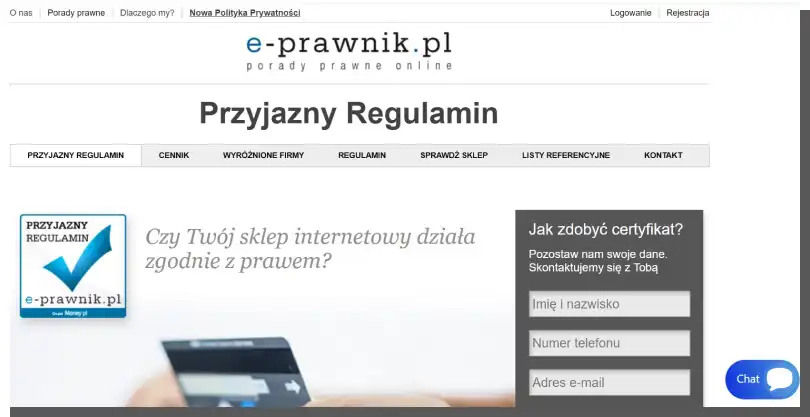
Trust becomes stronger when we have things that reduce fear and a sense of risk. Namely, they include the following:
- Experiences (direct and satisfactory)
- Information (in particular, from independent and trusted sources)
- Proof (notably, social proof).
On the Internet, the sense of security behind the trust is expressed by, above all, persuasive declarations and guarantees regarding the following:
- Safety of data and transactions (particularly payments)
- On-time fulfillment of orders and sales
- Legal protection of the established business/commercial relationship
- Compliance of the offer with its fulfillment and compliance of the presentation of the product with its actual traits
- Warranties and complaints
- Returns and the possibility of repeat sales.
For guarantees and declarations not to sound like empty words or empty promises, it's necessary to prove their credibility with the following:
- Technology (e.g., implementation of SSL certificate)
- Tools (e.g., external widgets, independent rating systems)
- Systems (e.g., trusted, external payment systems)
- Standards (e.g., regarding the way of presentation of essential customer data, for example, on dedicated subpages)
- Symbols of quality, trust, and predictability (e.g., awards, official recommendations)
- Case studies showing engagement and responsibility (CSR).
How to inspire and communicate trust on the Internet
In the case of building trust on the Internet, "No one should be a judge in their own cause." Thus, referring to external sources of opinions, authority, and trust is essential.
As well as to the following sources:
- Anonymous (with low individual authority but high authority derived from quantity: rating systems) and commonly known (with high individual authority but low authority resulting from quantity: references)
- Private and institutional
- Industry (associations and guilds) and general market (symbols of quality).
To be more specific, it's important to ensure proper exposition of elements that have vital information from the customer's perspective regarding the following:
- The history of the company (e.g., previous customers)
- The future of the company (e.g., messages regarding investments and personal changes)
- How the company operates (e.g., customer support standards, policies, and F.A.Q.)
- Safety guarantee (financial, technological, and legal)
- Operations outside of business
- Ratings, opinions, and positions (e.g., articles in the press and expert speeches at conferences).
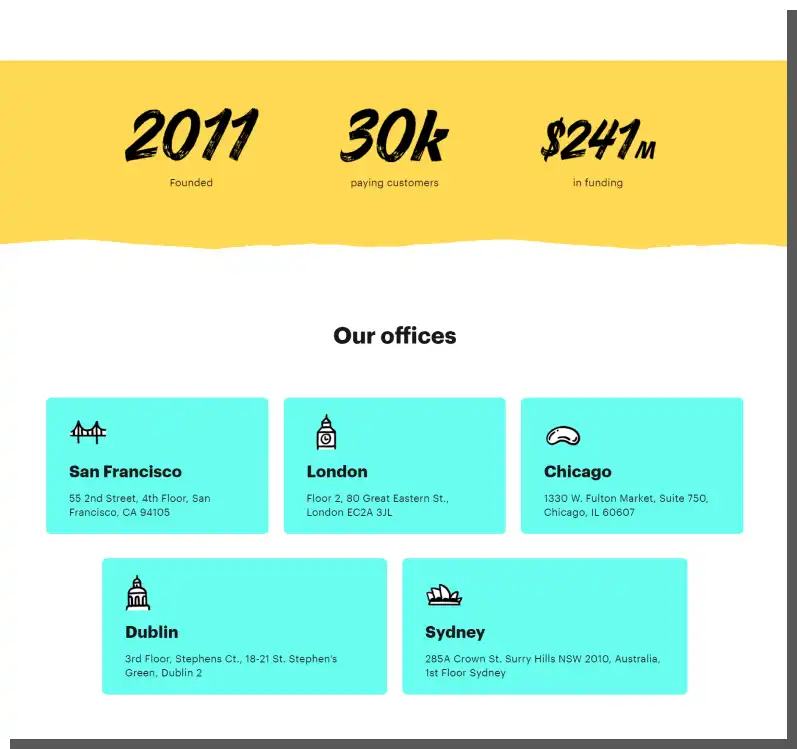
Testing a website — 15 most important Credibility Indicators
Case Studies
Case Studies are real stories, examples of success. They present the company from its best side and, to some extent, reveal its know-how.
Case Studies show the company's capabilities on a specific example by describing the solution to a particular business problem.
According to the researchers from the Nielsen Norman Group, Case Studies are a perfect way of educating customers and showing them the style and methods of solving problems. They support sales by using an easily falsifiable example.
It's an example that increases credibility through publicly available results of work. Case Studies should have four elements: a short summary, a summary of the customer's problem, proposed solutions, and results and effects of taken actions. Measurable, statically developed.
SSL Certificates (Secure Sockets Layer)
Certificates of this kind serve to ensure the security of financial transactions and the transmission of sensitive data by encrypting them.
They have three classes:
- DV (Domain Validation)
- OV (Organization Validation)
- EV (Extended Validation).
They are a clear signal to the customer that the B2B website they plan to use takes care of their comfort and safety by implementing effective and recommended technological solutions that are considered standard and even essential.
However, you can never rule out that the customer's technical knowledge regarding security on the Internet is incomplete.
Hence, it's essential to explain the benefits of using SSL Certificates. Show the B2B customer the advantages, consequences, and problematic situations they help avoid.
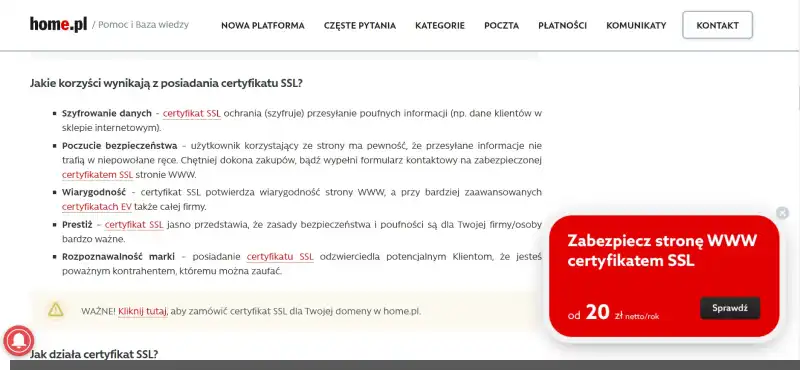
Company information, contact details
Providing complete and up-to-date company information is a legal requirement. The best practice, indicating the accessibility of the company and its openness, is to use a considerable amount of contact channels. E-mail addresses, phone numbers, infoline, chatbots, call-back technologies, and social media channels are nowadays a communication standard.
The company that offers various contact options shows its readiness to solve customers' problems. Organizations that take care of availability are considered friendly, pleasant, and helpful.
Offering only one contact option can be seen as an attempt to avoid the customer; such actions significantly lower credibility and trust in the B2B website.
Frequently Asked Questions (F.A.Q.)
The recurrence of customer problems allows you to easily face them through descriptions of methods to solve them.
Dedicated pages on which the most frequently asked questions were collected show the company as:
- Aware of their occurrence and importance, which shows that the company doesn't underestimate them
- Possessing established, standardized ways of operating
- Helpful, kind, and committed to solving customer problems.
Frequently asked questions increase the credibility of the B2B website by establishing relationships with customers that are based on respect, understanding of needs, and mutual understanding.
Discounts codes
They may seem like standard sales tools used to attract attention and create needs. However, they also have a function that supports credibility. They show that the company is open to negotiations. It is open to the customer regarding price, is flexible, and takes a non-dogmatic approach to the relationship.

Furthermore, discounts inspire sympathy, and sympathy supports credibility and trust. The discounts are an invitation, a gesture, a proposition. They present the company as ready to establish a relationship.
Discount codes are also an opportunity (in terms of technical and positive customer experience — CX) to make a good first impression on the customer. Especially when their use is seamless. An opposite situation results in frustration and disappointment, which don't support trust.
Awards
They are the most indisputable, impressive, and persuasive proof of quality, respect, and recognition. The greater the prestige of the award, the greater the credibility of the company that can boast it.
Awards always suggest the company's unique position in the market or among business leaders and indicate its potential and capabilities that its competitors don't have. Awards establish a hierarchy and indisputably suggest that the company is, in some aspect, unique and above standard.

Exposure of obtained awards is worth contextualizing, that is, providing information about them on appropriate subpages.
If the award was about sales integrity, aside from the home page on which it should be placed unobtrusively, it should be communicated on the shopping cart page and product card.
In every place where honesty, the fear of fraud is the biggest.
About us/About the company
B2B websites, similarly to B2C websites, are anonymous by nature. It's an image that should be as clear, specific, exhaustive, and "human" as possible.
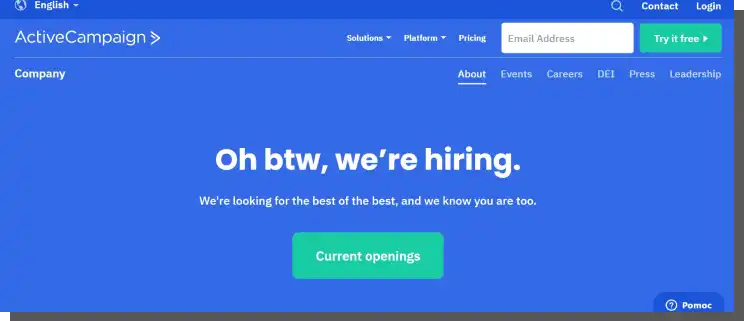
One of the most important functions of the About us/About the company subpages is shortening the distance between the customer and the company.
Showing its history, achievements, and profile, also in terms of its human dimension, allows the company to show its employees and lets the customers get to know them (from the business and private sides).
There are people behind every company, and people work in every company. However... People are different, and if the customer wants to entrust to the company the execution of tasks, they want to give them important information; they need to make sure that, as people, not just experts, arouse their trust.
It's worth remembering that a significant amount of information is obtained from non-verbal sources, such as appearance, behavior, self-presentation, and tone of voice.
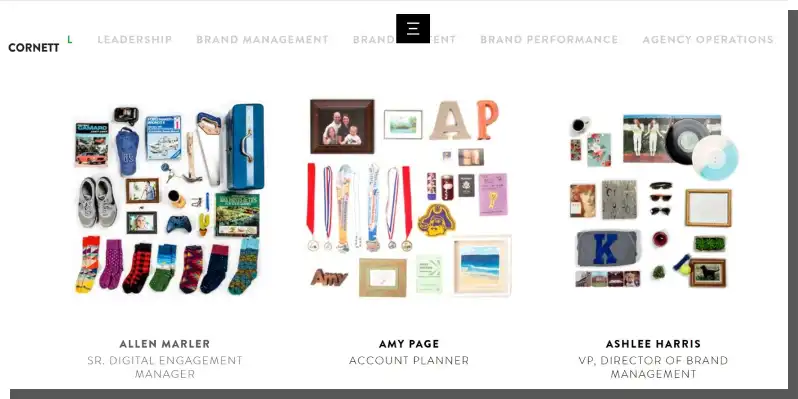
Privacy Policy
Attention to the customer is also expressed in caring for the information they give us. How they are used and stored is a matter of concern for many people.
Data selling practices are widespread, and customers are increasingly aware of harmful practices and don't want to consent to them.
Creating an exhaustive and accessible Privacy Policy is an opportunity to show the company's values.
The pro forma approach to creating the Privacy Policy will definitely miss the chance to show the company's attitude towards the customer.
Presentation of the price on the shopping cart page
Integrity is the most important criterion for evaluating the company's credibility; hence, it's essential to clearly, publicly, and fully inform customers about the costs of the product or service at every stage of the path to purchase.
It's all the more important if the cost constitutes several elements (e.g., taxes, delivery costs).
Surprising the customer with contradictory prices — in a pricing list and in order summary in the shopping cart is the most common reason for losing trust and making accusations of dishonest practices by the company.
This is all the more detrimental if it is amplified by technology and design practices (so-called Dark Patterns).
If your website contains a pricing plan page, then make sure that it's easily accessible and detailed so that the customer won't be confused about how much they need to pay for the company's services.
Terms and Conditions
Although people rarely read those, their placement on the B2B site is required due to legal requirements and recommended because of matters related to credibility and trust. Terms and Conditions determine the terms of sales, use of the offer, and ordering of services.
They determine the course of the cooperation and can be a signpost and a tutorial as well as a basis for making a complaint.
They suggest that the collaboration with the company progresses in a consistent, repetitive, and specific manner.
From the psychological side, it is a procedure that reduces fear and uncertainty; therefore, it is conducive to evoking credibility and trust.
Corporate Social Responsibility (CSR)
A company that is involved in important, socially beneficial activities, going beyond its basic operations, and that is oriented toward relief efforts and charity gains sympathy in the eyes of its customers. It is not seen as selfish or egotistic. It inspires trust by not being indifferent.

Payment system
Payment systems are the most thorny (although already pretty tamed) problem. Users always risk when they entrust their data (e.g., credit card numbers) during online transactions.
Hence, it's important to choose operators that guarantee the highest standard of technological security, insurance, and guarantees.
The speed of operation, seamlessness, and the small amount of data required for transactions increase the company's credibility. They also push back concerns regarding phishing for sensitive data.
Third-Party Reviews (User Reviews)
Quantity attests to quality, especially when the arithmetic average of the ratings is convincingly high. User Reviews summarizing purchases and cooperation are material that inspires trust or concerns towards the company.
People treat the ratings of other users and website visitors as credible, and they give them a bigger benefit of the doubt compared to the B2B site.
Biased, hater opinions are in the minority, and if they infringe on the terms and conditions of the system, they're deleted. Thus, they don't affect the credibility of the total ratings.
According to the researchers from Nielsen Norman Group, the credibility of the reviews, opinions, and ratings is the product of the credibility of their source.
In other words, people (e.g., industry bloggers) and companies have to be famous and considered unbiased, objective, and uninvolved in the power of their opinions to influence purchasing decisions.
Trustmarks
Logotypes, symbols of customers, partners, media, certificates, associations, awards, and recognitions are quick and visual summaries of the company's operations.
They summarize its history, visually suggest its market positions, and attest to the trust and credibility that has been bestowed on it.
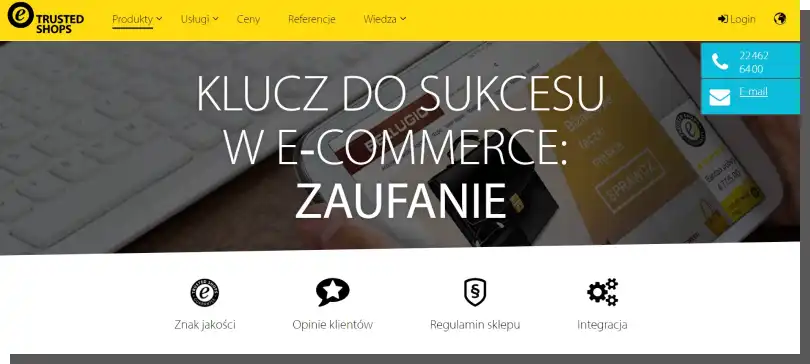
Their function and usefulness come from Social Proof (an effect described by the guru of social psychology, Robert Cialdini). Social Proof is built based on conviction — not necessarily conscious and confirmed — that there has to be an important reason that compelled people to cooperate with the company.
From this belief, it is assumed that since the reason works (is repetitive), it should also work for the next company.
Credibility and Trust are built here through the hope that the next company taking up the cooperation will be the following example to illustrate the principle, not an exception.
Testimonials
Presented in the form of quotations or the form of scans of documents, they should contain as much information as possible for identification and verification. They should also be easy to scan through by prospective customers.
In particular, they should include information about the name, surname, position, and name of the company, its TIN, address, date, and place of issuance of testimonials. A link referring to the company's website also increases credibility and trust.
Especially when it is authenticated through an external opinion source — for example, social media.
Summary
Let's summarize. The credibility of a website, the trust it allows you to gain, is the product of a good First Impression and the fine-tuning of the elements that make the B2B website credible in the eyes of its users.
Optimization and creation of the B2B website should aim to achieve an emotional effect as convincing and adequate to the aesthetic expectations of potential customers as possible.
The website that arouses sympathy and evokes positive emotions in the first 50 milliseconds of its use will be the website that will have a chance to convince the customer.
By fine-tuning the 15 crucial elements influencing the feelings and convictions of users about the website, you can make it credible and trustworthy in the eyes of B2B customers.







